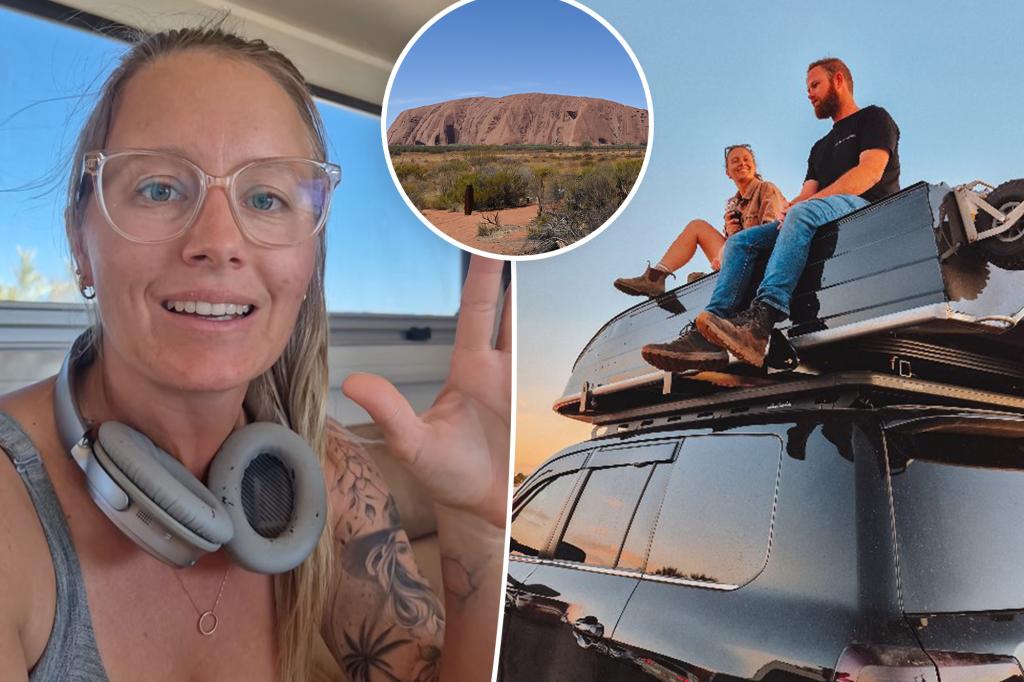RESPECTING SACRED LANDS: A TRAVEL VLOGGER’S UNEXPECTED JOURNEY AT ULURU
In an age where social media has turned travel documentation into a lifestyle, navigating cultural sensitivities becomes increasingly complex. This reality hit home for Australian travel vloggers Britt and Tim Cromie when their visit to Uluru (formerly known as Ayers Rock) led to an unexpected education in indigenous cultural respect and media regulations. The couple, who share their global adventures with thousands of followers through their handle @lifeofthecromies, encountered a situation that serves as a valuable lesson for content creators worldwide who seek to document sacred spaces.
Uluru stands as more than just a spectacular natural formation in Australia’s Northern Territory. At over 1,141 feet tall and 1.5 miles long, this massive sandstone monolith represents the world’s largest of its kind, but its significance runs much deeper. For the Aboriginal Anangu people, Uluru contains culturally sensitive sites equivalent to sacred scripture. The rock’s details and features “describe culturally important information and should only be viewed in their original location and by specific people,” according to the official Uluru Website. This cultural significance has led to comprehensive guidelines about photography and filming at the site—guidelines that the Cromies were unaware of during their visit. While photography is permitted in certain areas of the national park, content creators must apply for permits before capturing images or videos for commercial purposes, with costs ranging from $20 per day for photography to $250 daily for filming.
The Cromies’ initial misstep was innocent enough—they documented their experience without prior research into the cultural protocols. Upon learning about their oversight, they attempted to rectify the situation by retroactively purchasing the required permits and removing content that featured sensitive areas. However, three months after their visit, they received a surprising email detailing numerous violations they had unwittingly committed. The infractions extended beyond merely capturing prohibited sacred areas and included seemingly minor actions that carried significant cultural weight. “It’s not actually based complete[ly] on sensitive areas,” Britt explained in their viral Instagram post. “It’s things such as actions, like we picked up a broken branch we were using to swat flies and we’ve been told that we need to remove any footage of doing that.” They also learned that even in designated photography zones, there were specific requirements about how the landscape should be captured, with guidelines suggesting visitors obscure “sacred sites with an object such as a tree, bush, sand dune, person, or even a camel.”
The situation escalated when the couple discovered they had been flagged for activity breaching the Environment Protection and Biodiversity Conservation Act—a serious matter that could potentially carry significant penalties. The volume of inadvertent violations meant the Cromies would need to remove their entire YouTube video about Uluru and significant portions of their Instagram content, as selectively editing out all problematic material proved impossible. “There’s like 20 lines of fineable offenses,” Britt expressed with evident surprise in their viral post. Fortunately for the couple, despite the extensive list of violations, they ultimately escaped financial penalties—though the experience clearly left them shaken and eager to share their cautionary tale with fellow content creators.
What makes this story particularly valuable is not the potential controversy but the humility with which the Cromies approached their mistake. Rather than framing the situation as unfair or overly restrictive, they used their platform to educate others about the importance of cultural research before visiting and documenting sacred sites. “Do a s–tload of digging if you do want to film, photograph and share any of your content from Uluru,” Britt advised followers. “Just so you don’t end up with a massive email like this and potentially fined.” In their video caption, they offered practical guidance: “apply for a permit early, read the media guidelines carefully, and when in doubt, put the camera away.” This perspective shifts the narrative from one of restriction to one of respect—acknowledging that the limitations exist not to impede tourism but to preserve cultural heritage that dates back tens of thousands of years.
The Cromies’ experience highlights a broader challenge in modern tourism—balancing the desire to share beautiful destinations with respect for local cultures and traditions. As travel content creation becomes increasingly accessible and popular, stories like this serve as important reminders that responsible tourism extends beyond environmental considerations to include cultural sensitivity. For the Anangu people, Uluru is not merely a spectacular backdrop for social media posts but a living cultural text embedded with sacred knowledge. The regulations that initially frustrated the Cromies exist to protect not just a physical landmark but an irreplaceable spiritual heritage. Their journey from unintentional violation to conscious advocacy demonstrates how travel, at its best, can be a pathway not just to seeing new places but to deeper cross-cultural understanding and respect. For content creators worldwide, the message is clear: when documenting sacred spaces, taking the time to research cultural protocols isn’t just about avoiding fines—it’s about honoring the profound significance these places hold for indigenous communities who have served as their stewards for countless generations.















